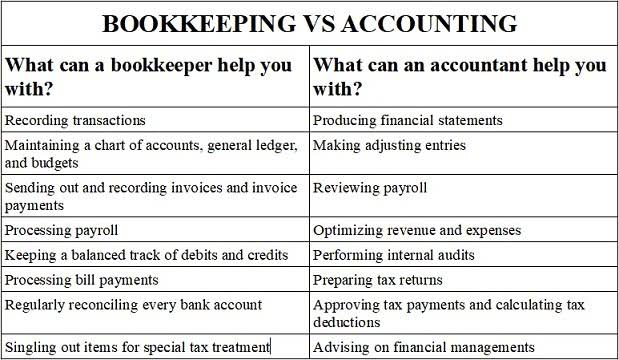
The triangular B reorganization is described in §1.367(b)-10, and the $60x of cash constitutes property under §1.367(b)-10(a)(3)(ii). Pursuant to §1.367(b)-10(b)(1), adjustments must be made that have the effect of a distribution of property in the amount of $60x from FS to FP under section 301. The $60x deemed distribution is treated as separate from, and occurring immediately before, FS’s acquisition of the 60-percent FP block used in the triangular B reorganization. The $60x deemed distribution from FS to FP results in $60x of dividend income to FP under section 301(c)(1) that is not foreign personal holding company income under section 954(c)(6).
Beginning of Period Retained Earnings

When an additional portion of the employee’s benefit becomes vested, that portion will be treated as an additional accrual. See paragraph (e) of this section for the rules for distributing benefits that accrue under a defined benefit plan after the employee’s first distribution calendar year. The portion of the single-sum distribution that is a required minimum distribution is determined by treating the single-sum-distribution as a distribution from an individual account plan and treating the amount of the single-sum distribution as the employee’s account balance as of the end of the relevant valuation calendar year. If the single-sum distribution is being made in the calendar year that includes the required beginning date and the required minimum distribution for the employee’s first distribution calendar year has not been distributed, the portion of the single-sum distribution that represents the required minimum distribution for the employee’s first and second distribution calendar years is not eligible for rollover.
What are retained earnings, and how are they calculated?
- Many believe corporations are attempting to smooth earnings, hide possible problems, or cover up mistakes.
- For this purpose, a designated beneficiary is an individual who is a beneficiary designated under the plan.
- (ix) In the case of an exchange to which §1.367(b)-3(g) applies, a statement describing how any excess asset basis (as defined in §1.367(b)-3(g)(2)(i)) arose, the amount of excess asset basis, and a description of the computation of the amount of excess asset basis.
- It is the end of the first month and the company needs to record an adjusting entry to recognize the insurance used during the month.
- It is the policy of the Service to publish in the Bulletin all substantive rulings necessary to promote a uniform application of the tax laws, including all rulings that supersede, revoke, modify, or amend any of those previously published in the Bulletin.
- If the employee’s death is after the required beginning date, the return of premium payment is treated as a required minimum distribution for the year in which it is paid and is not eligible for rollover.
Finally, if a corporation transacts business with international businesses, or hopes to attract international partners, seek capital from international sources, or be bought out by an international company, then having their financial statements in IFRS form would make these transactions easier. There are two options in accounting for appropriated retained earnings, both of which allow the corporation to inform the financial statement users of the company’s the accumulated net amount of revenue less expenses and dividends is reflected in the balance of future plans. The first accounting option is to make no journal entry and disclose the amount of appropriation in the notes to the financial statement. The second option is to record a journal entry that transfers part of the unappropriated retained earnings into an Appropriated Retained Earnings account. To illustrate, assume that on March 3, Clay Corporation’s board of directors appropriates $12,000 of its retained earnings for future expansion.
Changes in Accounting Estimates
For example, a designation of the employee’s children as beneficiaries of equal shares of the employee’s interest in the plan is treated as a designation of beneficiaries under the plan even if the children are not specified by name. The fact that an employee’s interest under the plan passes to a certain person under a will or otherwise under applicable State law does not make that person a beneficiary designated under the plan absent a designation under the plan. (4) Additional permitted increases for annuity payments from a qualified trust. Proposed regulations under section 401(a)(9) and related statutory provisions were published in the Federal Register on February 24, 2022 (87 FR 10504).5 Comments were received on the proposed regulations, and a public hearing was held on June 15, 2022. After the close of the comment period, the SECURE 2.0 Act, which affected many of the provisions included in the proposed regulations was enacted.
Retained Earnings are reported on the balance sheet under the shareholder’s equity section at the end of each accounting period. To calculate RE, the beginning RE balance is added to the net income or reduced by a net loss and then dividend payouts are subtracted. The normal balance in the retained earnings account is a credit.

Contract S provides that assets within the contract may be invested in a Fixed Account at a guaranteed rate of 2 percent. (e) Distribution of employee’s entire interest required—(1) In general. Except as provided in paragraph (f) of this section, if an employee’s accrued benefit is in the form of an individual account under a defined contribution plan, then the entire interest of the employee must be distributed by the end of the earliest of the calendar years described in paragraph (e)(2), (3), or (4) of this section.
Retained Earnings on the Balance Sheet

The comment contended that Example 3 effectively introduces a new rule by, for the first time, applying the anti-abuse rule to “override” the §1.367(b)-10(a)(2)(iii) priority rule, which in the example would otherwise prevent the P acquisition from being treated as a deemed distribution. The comment also argued that Example 3 further expands the scope of the anti-abuse rule by applying it “in connection with” a transaction that occurs after the applicable triangular reorganization rather than in connection with the P acquisition itself. The comment similarly asserted that Example 2 presents a fact pattern that is not within the purview of the anti-abuse rule because that example references a regulation that was issued after the TCJA, and as such cannot reflect an abuse that the 2011 Final Regulations contemplate. Therefore, the comment recommended that Examples 2 and 3 should either be eliminated from the final regulations or made to apply only prospectively as of October 5, 2023, the date the Proposed Regulations were filed with the Federal Register.
- If the amount rolled over is received in the calendar year following the calendar year in which the amount was distributed, then, for purposes of determining the required minimum distribution for that following calendar year, the account balance of the IRA as of December 31 of the calendar year in which the distribution was made must be adjusted by the amount received in accordance with §1.401(a)(9)-7(b).
- (2) Application to life expectancies that may not be recalculated—(i) Redetermination of initial life expectancy using current tables.
- In addition, the entity, even if it is a partnership, cannot act as a fiduciary; for example, it cannot be a bank or insurance company and use SME rules.
- See §§1.401(a)(9)-8(d) and (e) for rules that apply to qualified domestic relations orders.
However, it can also be calculated by taking the beginning balance of retained earnings, adding thenet income(or loss) for the period followed by subtracting anydividendspaid to shareholders. The Statement of Retained Earnings, or Statement of Owner’s Equity, is an important part of your accounting process. Retained earnings represent the amount of net income or profit left in the company after dividends are paid out to stockholders. For distribution calendar years up to and including the calendar year that includes the employee’s date of death, distributions from a designated Roth account (as described in section 402A(b)(2)) are not taken into account for purposes of determining whether this section is satisfied.
- Similarly, a governmental plan may apply the rules of section 401(a)(9)(F) using the rules of §1.401(a)(9)-6, Q&A-15 (as it appeared in the April 1, 2023, edition of 26 CFR part 1).
- (2) Rollover period for a plan loan offset amount—(i) Plan loan offset amount that is not a qualified plan loan offset amount.
- For this purpose, the specificity requirements of paragraph (a)(3) of this section apply.
- Section 1.401(a)(9)-2 provides rules for determining the required beginning date for distributions and whether distributions are treated as having begun during an employee’s lifetime.
- Dividend payments are generally considered to be financing activities, since these represent a return to shareholders on the original capital they invested.
- Because the distribution is made in a calendar year after B attained the applicable age and B intends to roll over the distribution to B’s own IRA, this paragraph (j)(4) applies to determine the portion of the distribution that is treated as a required minimum distribution.
- If an employee dies after distribution has begun as determined under §1.401(a)(9)-2(a)(3) (generally, on or after the employee’s required beginning date), distributions must satisfy section 401(a)(9)(B)(i).
At the end of his first month, he reviews his records and realizes there are a few inaccuracies on this unadjusted trial balance. Journal entries are recorded when an activity or event occurs that triggers the entry. Recall that an original source can be a formal document substantiating a transaction, such as an invoice, purchase order, cancelled check, or employee time sheet. Not every transaction produces an original source document that will alert the bookkeeper that it is time to make an entry. The unadjusted trial balance may have incorrect balances in some accounts.

